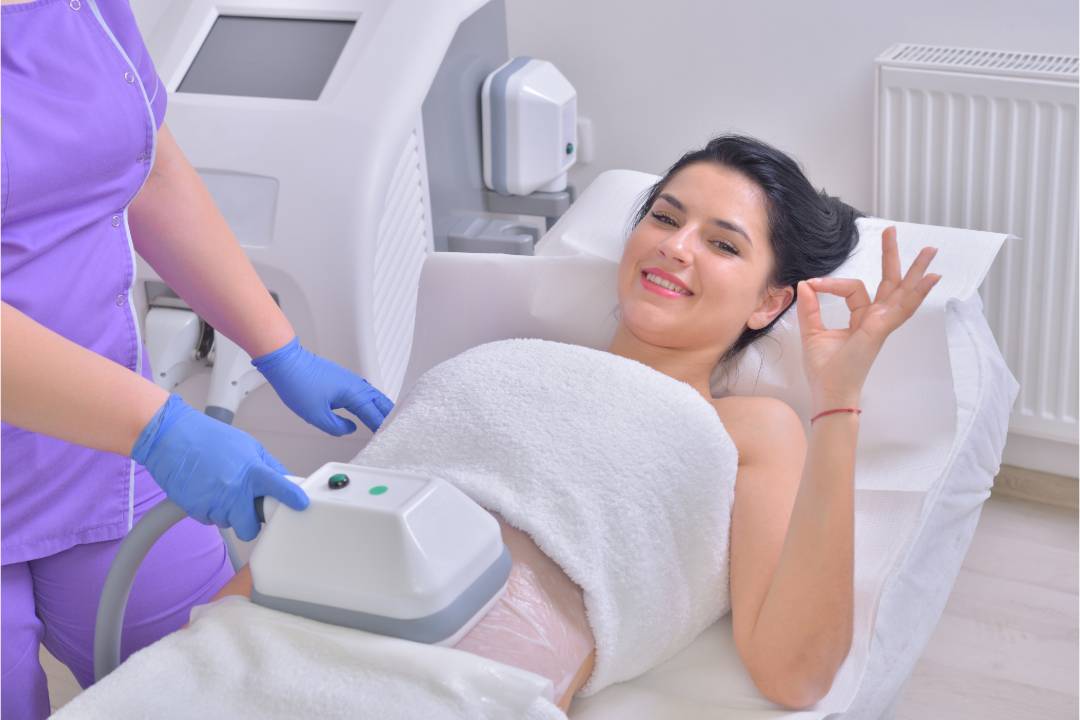
CoolSculpting: A Revolutionary Fat Freezing Method for Body Contouring
If you’re looking for a non-invasive way to reduce stubborn fat, CoolSculpting offers a standout solution. This revolutionary fat freezing method targets and eliminates fat cells without the need for surgery, making it an appealing option for many. With its growing popularity, you might wonder how effective it truly is and what to expect during the process.
CoolSculpting works by using controlled cooling to crystallise and destroy fat cells beneath the skin’s surface. This process is known for its precision and effectiveness, allowing you to sculpt your body in specific areas that may not respond well to diet and exercise alone. As you explore this innovative approach, you'll discover the benefits and considerations involved in choosing CoolSculpting for your body contouring needs.
Understanding CoolSculpting
CoolSculpting is an innovative non-surgical procedure that targets and reduces fat by freezing fat cells. This section explores the scientific principles of this technique and how it stacks up against traditional fat reduction methods.
The Science Behind the Technique
CoolSculpting operates on the principle of cryolipolysis. This process selectively targets fat cells while sparing surrounding tissue. During the procedure, a device is applied to the skin, delivering controlled cooling to the targeted area.
The cold temperatures trigger apoptosis, or natural cell death, in fat cells. Over time, your body metabolises these dead cells, resulting in a noticeable reduction in fat in the treated area.
Clinical studies have shown that CoolSculpting can lead to a reduction of up to 25% in fat thickness in the treated areas after one session. The results can continue to improve for several months as the body eliminates the frozen fat cells.
Comparison With Traditional Fat Reduction Methods
CoolSculpting distinguishes itself from traditional methods such as liposuction and dieting. While liposuction is an invasive procedure requiring anaesthesia and incisions, CoolSculpting is non-invasive.
Key Differences:
- Invasiveness:
- CoolSculpting: Non-invasive
- Liposuction: Invasive, requires surgery
- Recovery Time:
- CoolSculpting: Minimal downtime
- Liposuction: Extended recovery period
- Targeted Fat Reduction:
- CoolSculpting: Focuses on specific areas
- Liposuction: Can remove larger volumes of fat
Unlike traditional dieting, which may lead to general weight loss, CoolSculpting specifically targets stubborn fat pockets that are resistant to diet and exercise. This makes it a popular choice for individuals looking to refine their body shape without surgery.
The CoolSculpting Procedure
Understanding the CoolSculpting procedure is essential for anyone considering this fat reduction treatment. The process involves multiple steps, including initial consultations, the actual treatment, and post-treatment care.
Consultation and Assessment
Your journey begins with an initial consultation. During this appointment, a qualified practitioner will evaluate your health history and assess the areas you wish to target.
They will discuss your goals and expectations, ensuring you're a suitable candidate for CoolSculpting.
This assessment helps determine the best treatment plan for your body.
You may also review before-and-after photos of previous clients to set realistic expectations.
Treatment Process
Once your treatment plan is established, the actual procedure can begin. The area to be treated is marked, and a gel pad is applied to protect your skin.
The CoolSculpting device is then placed on the target area. You will feel a gentle suction as the device pulls the fatty tissue into a cooling panel.
This cooling process takes about 35 to 60 minutes, depending on the area being treated.
Most patients use this time to read, work on a laptop, or simply relax as the procedure is non-invasive and generally painless.
Post-Treatment Care
After the session, you can immediately return to your usual activities. There is no downtime associated with CoolSculpting.
You may experience some redness, swelling, or tenderness in the treated area, but these side effects typically resolve within a few days.
Your practitioner may provide specific aftercare instructions, such as avoiding strenuous exercise for a short period.
Results start to appear gradually, usually within a few weeks, as your body metabolises the frozen fat cells. Regular follow-ups can help monitor your progress.
Benefits of CoolSculpting
CoolSculpting offers numerous advantages for those looking to eliminate stubborn fat. It stands out due to its non-invasive approach, effectiveness in fat reduction, and a relatively quick recovery process.
Non-Invasive Nature
CoolSculpting is a non-surgical fat reduction technique. This means you don’t need to go under the knife or pay for extended hospital stays.
The procedure uses controlled cooling to target and freeze fat cells. As a result, the fat cells undergo apoptosis and are naturally eliminated over time.
Since it is non-invasive, there are minimal risks compared to surgical options. You can return to your daily activities almost immediately, making it a convenient choice for busy individuals.
Duration and Effectiveness
Each CoolSculpting session typically lasts between 35 to 60 minutes, depending on the treatment area. Results are often visible within a few weeks, with optimal results appearing after about three months.
Many patients experience a reduction of up to 25% of fat in the treated area per session. Multiple sessions may enhance results for those with larger areas of concern.
The effectiveness of CoolSculpting is well documented. Clinical studies support its ability to provide significant fat reduction, boosting confidence and body image in those who choose it.
Recovery and Risks
Recovery after CoolSculpting is usually quick. Most patients experience minimal discomfort, possibly including redness, bruising, or swelling in the treated area.
These side effects typically resolve within a few days. You can resume normal activities immediately.
While CoolSculpting is generally safe, some people may experience rare side effects, such as paradoxical adipose hyperplasia, where the fat expands rather than reduces. Discuss any concerns with your practitioner to ensure informed decisions regarding your treatment.

Comments (0)